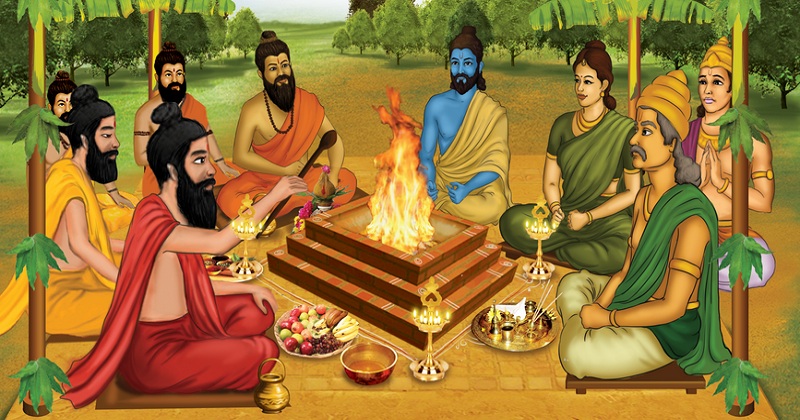
In Hinduism, human life is believed to comprise four stages. These are called “ashramas” and every person should ideally go through each of these stages:
The First Ashrama: “Brahmacharya” or the Student Stage
The Second Ashrama: “Grihastha” or the Householder Stage
The Third Ashrama: “Vanaprastha” or the Hermit Stage
The Fourth Ashrama: “Sannyasa” or the Wandering Ascetic Stage
All these stages of life are related to the four goals of life, the main goal being the attainment of knowledge. Here we give the detailed information about what are the four stages of life.
Brahmacharya
Brahmacharya refers to the student age where a person is to supposed to focus on learning everything as a student. The aim of this stage of life is the development of the body, mind, and the intellect. Brahmacharya is the Sanskrit word for celibacy. Celibacy has to be followed while this stage of life goes on. While these days, it is known as the student life and or bachelorhood, in the ancient days the child was made to stay with the Guru throughout the stage of Brahmacharya and acquire all forms of learning. The student was also supposed to work and earn something that could be paid to the teacher as Dakshina. The ideal age limit for this stage was that of 24 years.
Grihastha
This stage referred to the time when the individual would get married and become a Grihastha. Grihastha has been taken from the word ‘Grih’ a Sanskrit word which translates to house. So the Grihastha is the householder. With this stage of life come the responsibilities associated with marriage and family. One is supposed to perform all the duties towards one’s parents and family, by earning money and means of livelihood, adopting Dharma as the way of life. This is also categorised as the time when the life of the individual includes the most social, occupational, physical and emotional attachments. The time period for this stage of life is from 24 to 48.
Vanaprastha
Often also referred to as the transition stage, Vanaprastha refers to that time when a person hands over his family duties to the next generation and retires from them. He takes up an advisory role and is supposed to practice spirituality. His goals become even higher which involve renouncing from the life of a householder and materialism and moving towards spiritual enlightenment. This stage encompasses the age between 48 and 72 years.
Sanyasa
Sanyasa marks that stage of life in which one detaches oneself from all the material desires as well. While Vanaprastha refers just to the renunciation from the responsibilities, Sanyasa refers to the renunciation of all forms of property and detachment from the desires associated. An individual generally should take up the life of a hermit, to be ideally called a Sanyasi. However, the Sanyasa stage can be entered even after completing the Brahmacharya. Otherwise, he is called a Sanyasi only after he completes the age of 72 years.

Post Your Comments